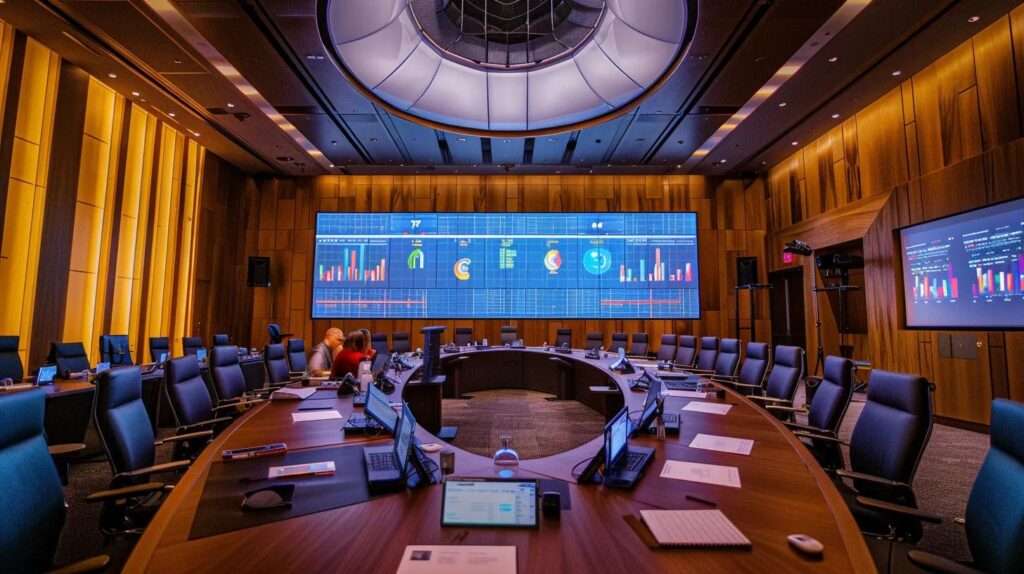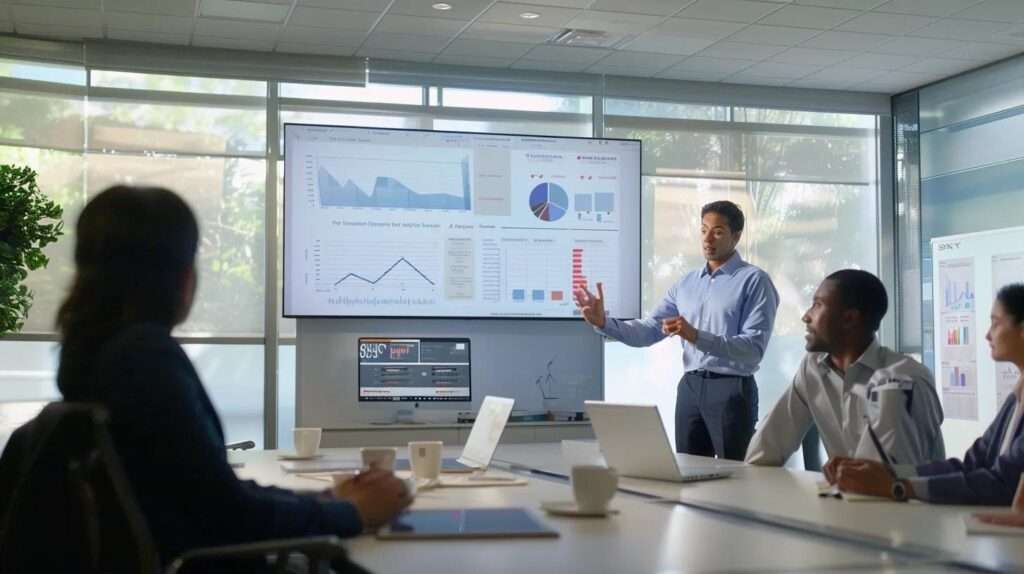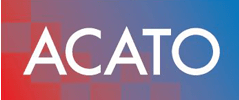
Guidelines for Conducting ISO 27001 Management Reviews
Is your organization struggling to maintain a robust information security posture? The ISO 27001 certification process is designed to help, but effective management reviews are critical to its success. This article will provide guidelines on conducting ISO 27001 management reviews, covering key steps such as preparation, execution, and documentation. By focusing on these essential areas, readers will understand how to improve their quality management systems and meet the expectations set by the International Organization for Standardization, especially for clients in the European Union. These insights will address common challenges and enhance your organization‘s overall security strategy.
Key Takeaways
- Defining scope and objectives is vital for effective ISO 27001 management reviews
- Engaging stakeholders enhances communication and accountability during the review process
- Regular data gathering improves decision-making and drives continuous improvement in security practices
- Creating a comprehensive agenda ensures all relevant topics are addressed in reviews
- Overcoming challenges like data gaps and time constraints is crucial for effective management reviews
Understanding the ISO 27001 Management Review Process

The ISO 27001 management review process involves several critical components, as part of the iso 27001 certification process, beginning with defining the scope and objectives of management reviews. Key stakeholders and their roles play a significant part in the efficiency of these reviews, helping to ensure effective data analysis and relevant training initiatives. This section will explore how to align these elements for comprehensive management reviews that support the overall information security framework.
Defining the Scope and Objectives of Management Reviews
Defining the scope and objectives of management reviews in the context of ISO 27001 is essential for establishing clear expectations and responsibilities. Organizations should consider factors such as remote work environments and the need for thorough gap analysis to identify areas requiring improvement. By integrating principles from OHSAS 18001 and the PDCA (Plan-Do-Check-Act) cycle, organizations can ensure that management reviews not only support compliance with professional certification requirements but also foster a culture of continuous improvement in information security practices.
Identifying Key Stakeholders and Their Roles
Identifying key stakeholders in the ISO 27001 management review process is vital for effective communication and collaboration. Stakeholders may include IT directors, compliance officers, and department heads, each responsible for various assets and their security within the organization. Defining their roles in accordance with relevant clauses of the ISO 27001 standard and associated contracts enhances accountability and ensures that everyone understands their contribution to maintaining a competitive advantage.
| Stakeholder | Role |
|---|---|
| IT Director | Oversees information security policy implementation and management review outcomes. |
| Compliance Officer | Ensures adherence to relevant regulations and internal policies. |
| Department Heads | Identify asset-specific risks and implement necessary security measures. |
The process is clear, but action brings clarity. Now, it’s time to prepare for an effective management review that will strengthen your ISO 27001 journey.
Preparing for an Effective Management Review

Establishing a review schedule and frequency is the first step in preparing for an effective management review of ISO 27001. This ensures regular evaluation of evidence, especially regarding the security of personal data and medical device information. Gathering relevant data and creating a comprehensive meeting agenda will facilitate knowledge sharing and assess environmental security effectively.
These preparatory steps are essential for promoting focused discussion and driving continuous improvement throughout the organization.
Establishing the Review Schedule and Frequency
Establishing a review schedule and frequency for ISO 27001 management reviews is crucial for maintaining an effective risk management framework. Organizations should consider the use of a database to track incidents and policy adherence, ensuring that timely reviews focus on critical areas such as mobile device security and surveillance measures. Regular intervals for reviews allow for ongoing assessment and adaptation of security strategies, fostering a proactive approach to potential vulnerabilities.
Gathering Relevant Data and Information
Gathering relevant data and information is essential for an effective management review within the ISO 27001 framework. Stakeholders should compile documents that reflect the performance of the quality management system, focusing on the security measures taken to protect customer information. Accurate and timely data on system vulnerabilities and incident reports allow organizations to make informed decisions, ultimately driving improvements in their information security management practices.
Creating a Comprehensive Agenda for the Meeting
Creating a comprehensive agenda for an ISO 27001 management review meeting is crucial for ensuring that all relevant topics are covered efficiently. This agenda should include points that address key areas such as leadership involvement, accountability, and the role of an external auditor in the accreditation process. By organizing discussions around these focal areas, senior management can facilitate informed decision-making and ensure alignment with the organization‘s information security goals:
- Introduction and review of previous meeting minutes
- Overview of information security performance metrics
- Discussion on recent audits and findings, including those from the external auditor
- Evaluation of leadership effectiveness in implementing security measures
- Action items and accountability assignments for department heads and accountants
- Closing remarks and scheduling of the next review meeting
With plans in place, the time has come to put them into action. Gathering the team for the management review will reveal what has been learned and where to go next.
Conducting the Management Review

Facilitating constructive discussions among stakeholders is paramount during the management review process. This allows organizations to review performance against established objectives, ensuring alignment with quality management principles. Additionally, evaluating changes in the Information Security Management System (ISMS) context helps address risks related to malware and authentication, and supports effective mitigation strategies within the supply chain.
Facilitating Constructive Discussions Among Stakeholders
Facilitating constructive discussions among stakeholders is essential for effective ISO 27001 management reviews. Within the organization, open communication fosters an environment where participants can share insights on certification requirements and regulatory compliance. By addressing topics such as relevance of security measures and necessary preventive actions, stakeholders can collaboratively identify risks and propose solutions that enhance information security strategies.
- Preparation of agenda prior to meetings
- Encouraging open dialogue among stakeholders
- Evaluating previous action items and their effectiveness
- Identifying areas for preventive action concerning vulnerabilities
- Reviewing compliance with relevant regulations
Reviewing Performance Against Objectives
Reviewing performance against objectives in the ISO 27001 management review process is crucial for ensuring information security remains effective and compliant. Organizations should incorporate insights from internal audits to evaluate areas such as business continuity planning and backup procedures. Evaluating these objectives not only identifies potential gaps but also enhances the overall resilience of the information security framework, allowing stakeholders to make informed adjustments that align with established goals.
Evaluating Changes in the ISMS Context
Evaluating changes in the Information Security Management System (ISMS) context is essential for organizations striving to manage vulnerabilities effectively. By regularly assessing how cryptography and other security measures respond to emerging risks, companies can enhance their resource allocation strategies. Tools like Vanta assist in this evaluation, enabling organizations to streamline their security processes while ensuring compliance with ISO 27001 standards, thereby fortifying their defenses against potential threats.
After conducting the management review, the real work begins. Documenting the outcomes not only captures insights but also sets the stage for future improvements.
Documenting the Management Review Outcomes

Effectively documenting the outcomes of the ISO 27001 management review is crucial for reinforcing the organization‘s information security strategy and framework. This includes carefully recording meeting minutes and action items that align with the scope of risk assessment and project management. Communicating results to relevant parties ensures awareness of responsibilities, while establishing follow-up on action plans reflects the organization‘s risk appetite and commitment to ongoing improvement. ISO 27001 gap analysis
Recording Meeting Minutes and Action Items
Recording meeting minutes and action items during ISO 27001 management reviews is critical for ensuring transparency and accountability. It is essential to standardize the documentation process to facilitate effective analysis of the decisions made and actions assigned. Establishing a frequency for sharing these minutes, perhaps through an email address designated for compliance purposes, guarantees that all stakeholders remain informed about their responsibilities and the resources needed to implement the agreed-upon measures efficiently.
Communicating Results to Relevant Parties
Communicating the results of the ISO 27001 management review to relevant parties is essential for promoting access control and enhancing the effectiveness of incident management strategies. By providing clear insights to users regarding their roles in safeguarding information assets, organizations create a more informed and responsive landscape. This communication not only reinforces accountability but also facilitates timely adjustments to security measures, ensuring that all stakeholders remain aligned with the organization’s information security objectives.
Ensuring Follow-Up on Action Plans
Ensuring follow-up on action plans is essential for maintaining momentum after management reviews in organizations adhering to ISO 27001. This process not only emphasizes accountability but also allows organizations to streamline methodologies, thereby reinforcing best practices in information security. Automation tools can be integrated to track progress on assigned action items, ensuring that significant aspects like intellectual property protection align with the standards set by the National Institute of Standards and Technology.
- Establish clear action items during management reviews.
- Utilize automation tools for tracking and reporting progress.
- Regularly assess the effectiveness of implemented action plans.
- Ensure accountability by assigning specific responsibilities to stakeholders.
- Communicate updates to all relevant parties promptly.
With the outcomes documented, the real work begins. Management reviews are not just a summary; they are the heartbeat of progress, driving continuous improvement forward.
Continuous Improvement Through Management Reviews

Analyzing lessons learned and best practices from past management reviews enhances the effectiveness of the ISO 27001 framework. Incorporating feedback into future evaluations ensures a focus on asset management and continuous improvement. Adjusting the Information Security Management System (ISMS) based on audit findings allows for effective measurement and implementation of corrective and preventive actions, maintaining strong security posture.
Analyzing Lessons Learned and Best Practices
Analyzing lessons learned and best practices from previous ISO 27001 management reviews plays a crucial role in strengthening an organization’s information security framework. Gathering insights on what strategies proved effective or ineffective enables organizations to refine their approach to risk management and compliance. Each review cycle can serve as an opportunity for departments to share their experiences, thereby fostering a culture of ongoing improvement across the organization:
- Identifying key lessons from past management reviews.
- Implementing best practices that enhance information security measures.
- Encouraging a collaborative environment for sharing insights.
- Adjusting strategies based on audit findings and stakeholder feedback.
Incorporating Feedback for Future Reviews
Incorporating feedback from previous ISO 27001 management reviews is vital for fostering a culture of continuous improvement within an organization. Feedback helps identify specific areas for enhancement, such as addressing vulnerabilities or improving compliance procedures, allowing for targeted adjustments to the Information Security Management System (ISMS). Organizations should actively encourage stakeholder participation in providing insights that inform future evaluations, ensuring that lessons learned are effectively integrated into subsequent management review processes:
- Gather feedback from stakeholders following each management review.
- Identify trends and recurring issues that may need addressing.
- Implement changes in response to actionable insights from past reviews.
- Regularly assess the impact of these changes on information security practices.
Adjusting the ISMS Based on Findings
Adjusting the Information Security Management System (ISMS) based on findings from management reviews is essential for maintaining an effective security posture. Organizations should utilize insights gained from audits to update policies and procedures that address identified weaknesses or gaps. This proactive approach not only ensures compliance with ISO 27001 standards but also reinforces the organization‘s resilience against evolving security threats:
- Continual assessment of audit results to inform updates.
- Timely revisions of security measures in response to new vulnerabilities.
- Engagement of relevant stakeholders in implementing changes.
Management reviews offer a path to growth. Yet, challenges lurk in the shadows, complicating the ISO 27001 journey ahead.
Common Challenges in the ISO 27001 Management Review Process

Common challenges in the ISO 27001 management review process include addressing stakeholder engagement issues, overcoming data gaps and quality concerns, and managing time constraints during reviews. Each of these topics highlights practical obstacles that organizations face in ensuring effective management reviews. Understanding these challenges allows for the implementation of strategies that enhance engagement, improve data integrity, and optimize review timelines, ultimately strengthening information security practices.
Addressing Stakeholder Engagement Issues
Engaging stakeholders during the ISO 27001 management review process represents a significant challenge for many organizations. It is essential for leadership to recognize and address the root causes of disengagement, which may include insufficient clarity regarding individual roles or a lack of perceived value in the review process. Encouraging open dialogue and providing clear communication about how each stakeholder‘s contributions impact information security outcomes can enhance participation and foster a sense of shared responsibility, ultimately leading to more effective management reviews.
Overcoming Data Gaps and Quality Concerns
Overcoming data gaps and quality concerns during the ISO 27001 management review process is essential for accurate decision-making and effective risk management. Organizations can address this challenge by implementing robust data collection methods, including regular audits and real-time monitoring systems, which ensure that relevant information is up-to-date and reliable. By prioritizing data integrity and fostering a culture of transparency, stakeholders can build trust in the information shared during reviews, ultimately leading to more informed discussions and strategic improvements in information security practices.
Managing Time Constraints During Reviews
Managing time constraints during ISO 27001 management reviews poses a significant challenge for many organizations. Limited time can hinder the thorough evaluation of security measures and compliance with regulations. To address this issue, organizations can implement strategies such as setting clear priorities, utilizing efficient data collection methods, and preparing concise agendas. These approaches not only streamline the review process but also ensure that critical areas receive the attention they require, enhancing the overall effectiveness of the management review while accommodating tight schedules.
Conclusion
Effective guidelines for conducting ISO 27001 management reviews are essential for enhancing an organization‘s information security posture. By establishing clear objectives and actively engaging stakeholders, companies can ensure compliance while fostering a culture of continuous improvement. Regular evaluations of security measures and documented outcomes lead to informed decision-making and strategic adjustments in response to emerging threats. Adhering to these practices not only reinforces accountability but also strengthens the overall risk management framework, contributing significantly to long-term organizational success. information security guidelines
